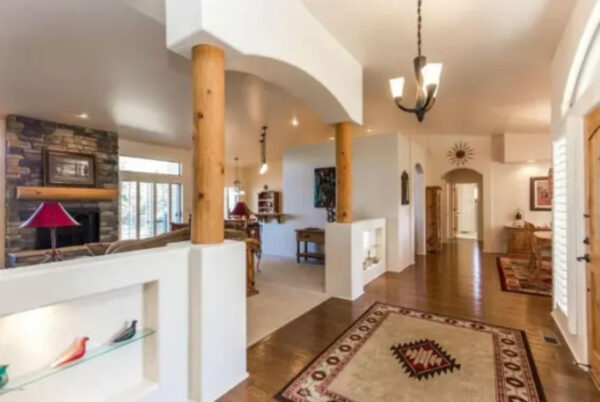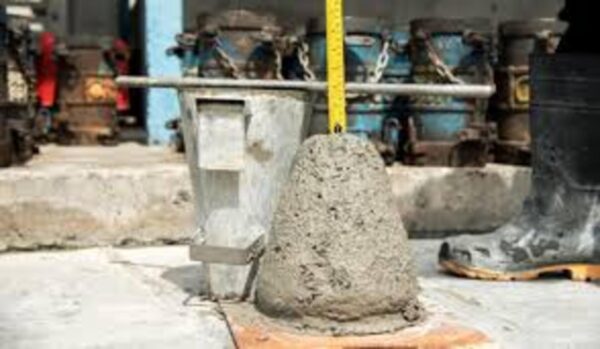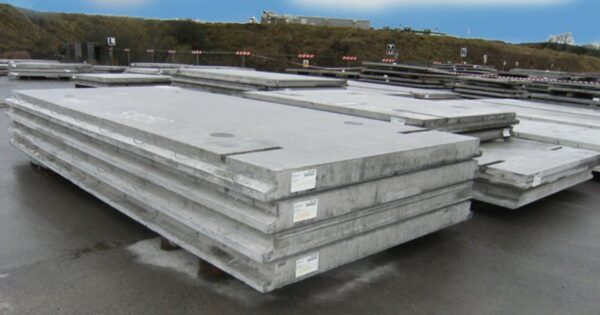A concrete porch is an outdoor living space connected to the entrance of a house, constructed using concrete as the main building material.
Concrete porches provide an area for residents to relax outdoors and welcome guests. They act as a transition area between the yard and interior living spaces.
Concrete is a versatile and strong material composed of aggregate (gravel and sand) held together in a matrix with cement.
Concrete has high compressive strength but weaker tensile strength. By adding reinforcing materials like rebar, concrete’s durability and resistance to cracking and weaknesses dramatically improves.

Types of Failures of Concrete Porch
Though porous and durable, concrete porch surfaces can deteriorate and become damaged over time when exposed to heavy use and harsh weather conditions. Common types of concrete porch failures include:
- Cracking: Normal expansion/contraction of concrete leads to cracks. Settling foundations and freeze/thaw cycles worsen cracking.
- Scaling & Pitting: Surface deterioration caused by improper concrete curing, freeze-thaw cycles and use of de-icing salts.
- Spalling: Flaking off concrete from reinforcement corrosion or freeze-thaw damage. Often occurs on corners and edges.
- Efflorescence: White powdery deposits appearing on surface due to moisture & salt compound leakage.
- Frost Heave: Uneven distortions from porch freezing and expanding in winter climates.
Neglecting minor concrete cracks or damage can allow water intrusion, exacerbating issues and creating safety hazards.
Methods for Concrete Porch Repair
There are several methods available to repair the variety of issues that can affect exterior concrete porches over their lifespan. The optimal repair approach depends on factors like:
- Type and extent of concrete damage
- Outdoor regional climate and conditions
- Usage level and foot traffic patterns
- Aesthetic preferences and porch visibility
- Budget for repair costs
Surface Cracks
For minor surface cracks under 1/4 inch, basic repair involves cleaning out and widening the crack slightly before applying a concrete crack filler compound, patching cement, epoxy injector kit or polyurethane caulk sealant.
These can effectively fill cracks to restore structural stability and prevent intrusion of water and debris.
Pitting, Scaling and Spalls
More significant concrete deterioration like pitting, scaling and spalled sections often requires resurfacing to return integrity.
Options include applying a fresh concrete topping, stucco coating, brushed concrete finish or polymeric sand cement blend up to 2 inches thick after securing loose material.
This essentially creates a new surface layer.
Efflorescence
The white powdery deposits of efflorescence can be removed through muriatic acid washes before using concrete sealers to reduce subsurface moisture penetration and salt compound carry through. Multiple treatments may be needed for porous, salt-exposed concrete.
Freeze-Thaw Damage
Freeze-thaw damage causing uneven heaving requires improving site drainage first. Then stabilize affected sections by pressure injecting concrete, polyurethane foam or grout beneath to level.
Badly deteriorated sections may need breaking up and repouring if mud-jacking cannot inject successfully.
Resurfacing Overlays
For extensively damaged porch surfaces beyond basic patching methods, consider concrete resurfacing overlays.
Depending on the overlay product used, it can hide imperfections, improve drainage slopes, restore structural integrity, and provide enhanced protection. This essentially creates a fresh new surface.
Cost to Repair Concrete Front Porch
Depending on damage extent and type of repair method used, costs can range dramatically. Basic patching of minor cracks or holes starts around $10 per square foot using DIY kits.
Hiring concrete contractors for mud-jacking sunken sections or pouring concrete resurfacing costs $6-12 per square foot.
For damaged porches with underlying foundation issues, complete replacements average $15-25 per square foot.
Repairing Concrete Patio Porch Steps
Outdoor concrete steps endure heavy foot traffic and weather exposure, resulting in cracked edges, pitted surfaces, and erosion over time. Deteriorated stairs present tripping and falling risks and should be promptly repaired.
Inspect Underlying Structure
Check for signs of settling around stair sidewalls, posts and underlying support first. Secure any loose railings or attachments. Ensure the framework is stable before cosmetic resurfacing.
Grind Down Raised Edges
Use a handheld concrete grinder to gently smooth and lower any raised corners or bubbled areas along step edges. Feather out the area so it slopes gradually.
Clean and Patch Surface Holes
Clear dirt, debris, staining or paint residues using degreasers and wire brushing. Rinse thoroughly. Allow to fully dry before applying concrete patcher to fill pops, pits, divots per package instructions.
Resurface Deeply Etched Areas
For large flat areas with extensive ravines, pits or etching, apply a fresh layer of concrete resurfacer blend up to 2 inches thick. It will self-level as it cures, creating a renewed surface. Follow all preparation and curing steps.
Replace Severely Damaged Stairs
In cases where multiple stairs are crumbling apart with reinforcements exposed, a full replacement will be needed. Break apart old steps and dispose properly. Add gravel fill if needed to create a stable base before building new stair forms and pouring new concrete.
Proper repair of damaged concrete porch steps eliminates safety issues while restoring visually appealing and functional stairs residents can comfortably use for years.
Replacing Broken Concrete Porch Tiles
If the porch surface features decorative concrete tiles that are severely cracked, chipped or loose, replacement is needed.
Match tiles style and dimensions closely to originals, or consider fresh poured concrete resurfacing for a new appearance.
Carefully pry or chisel out damaged sections, add supporting gravel and sand base packing tightly before laying new tile pavers. Use concrete grout between seams.
Repairing Frost Damaged Concrete Porch
Harsh winters can cause frost heaving, where water seeps underneath causing uneven distortion called mudjacking. To return the porch to level, inject expanding polyurethane foam beneath sunken sections, or pump cement grout using special equipment.
Break apart badly raised sections first. Improve drainage and slope away from the house.
Fixing Uneven Sunken Concrete Porch
Settling foundations are the most common cause of sunken uneven concrete porch slabs. Mudjacking can raise and stabilize sections by pressure injecting cement beneath.
Determine if settling is still active with foundations before repairing – stabilization work may be needed first. Alternatively, have concrete contractors pour a fresh level surface over distressed areas.

DIY Stamped Concrete Porch Repair
Minor DIY repairs can have nice aesthetic results when combined with stamped concrete resurfacing products after patching holes, cracks and spalls properly.
Choose stamp mat patterns like brick, stone or tile and match to existing patio or home exterior design.
Prepare the surface, spread coloured and textured concrete mix over the area according to manufacturer instructions. Press rubber stamp mats in place before curing. Sealing gives added protection.
Resurfacing Old Concrete Porch Floor
An old, worn and dingy looking concrete porch floor can be improved through resurfacing. After thorough cleaning and etching, apply concrete resurfacer products like polymeric sand & cement blends up to 2 inches thick.
Ensure proper slope away from the house for drainage. Follow curing times before staining or painting. A fresh new surface hides imperfections for a decorative upgrade.
Ways to Make Concrete Porch Repair Look Nice
Beyond resurfacing products, consider easy DIY upgrades like painting designs, adding porch tiles as accents or installing outdoor area rugs.
Built planter boxes flanking either side not only looks nice but prevents soil and water runoff deterioration.
For high-use entertainment spaces, add finishes like etching patterns, scoring joints or exposing aggregate for visual interest.
Conclusion
Regular inspection and timely repair extends the longevity of valued outdoor concrete living spaces. Matching appropriate repair techniques to detected issues minimizes costs and prevents exacerbation of porch problems.
Both cosmetic and functional repairs to aged and damaged concrete porches allow homeowners to again leverage these areas for entertainment purposes safely.
Professional concrete contractors can advise on optimal repair approaches based on your porch’s unique situation and deterioration patterns.
Be sure to address any underlying settlement issues first before resurfacing. Using concrete sealers after repair prevents future moisture penetration and damage..





